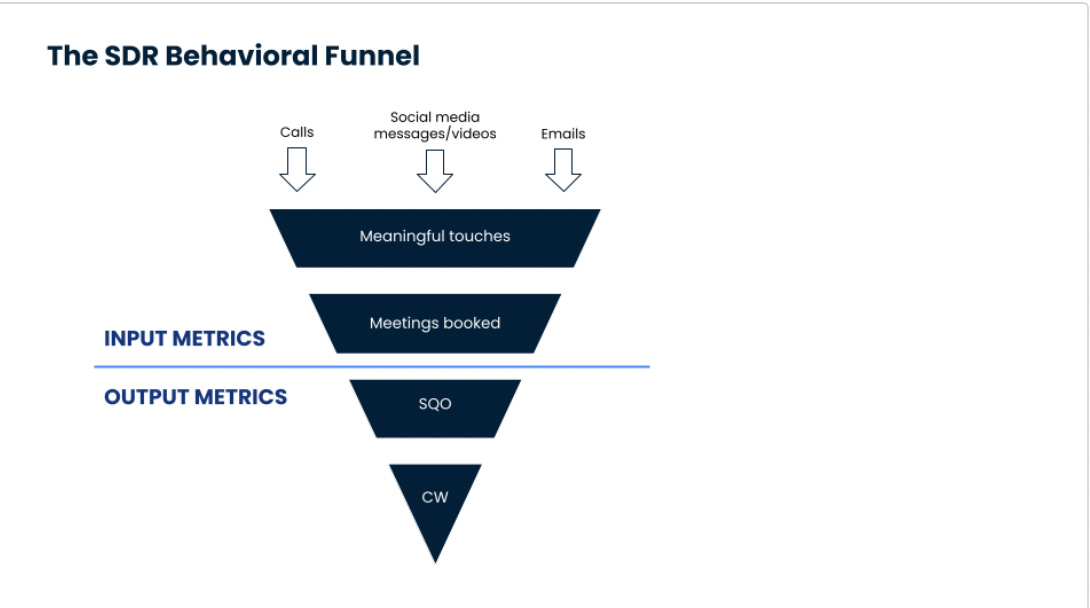Don't Just Sit There, Email!
An overview of the real KPI: attention
Credit: HarrisFanaroff
Jed Mahrle of Practical Prospecting recently had a great write up on the state of cold email in 2023. Worth a read if you have a minute.
The biggest takeaways:
The old cold email strategies aren’t as effective (or simply don’t work at all)
If you sell SaaS, you probably have way more competitors than before
I can’t disagree that inboxes are inundated with vendor solicitation (competing ones at that). It’s harder than ever to stand above the noise. The level of input (ie amount of emails) isn’t providing the level of output (ie meetings generated) it had previously.
At a quick glance, it’s easy to say volume isn’t the answer.
That said, leaving it out altogether might not be a solution either. The smile and dial model of old reached a tipping point and stopped working, or at least wasn’t as scalable as email/social. We all know that cold calling isn’t actually dead.
Think of it this way, the purpose of a hammer is to drive in nails. But if there’s no nails to drive, it doesn’t mean you leave it out of the toolbox altogether. You can also use it for breaking up cement or tapping a wood chisel.
Email, cold calls, texting, social - all tools in a toolbox to get the attention of prospects and engage them in sales cycles.
Which begs the question:
Should high volume email be a part of your outbound strategy?
I agree with Harris - 10,000 emails is not a good use of time and won’t be effective. Goes without saying, spamming just doesn’t work.
Credit: TechSalesGuy, TJ
RevGenius provides a nice breakdown on redefining input and output metrics for SDR teams.
My take is that the lens around email KPI have simply shifted. It doesn’t mean that volume in and of itself doesn’t work. If it’s not meetings, then at least you’re capturing attention.
The KPI around emails and outbound volume shouldn’t JUST be meetings. You have to deliver value FIRST in order to get above the noise. The tertiary benefit to this is that you can now add to the traditional KPI of “meetings generated”.
Those KPI’s might look like:
Surfacing intent or interest signals
Driving familiarity
Surfacing Intent or Interest Signals
Who’s clicking, opening, or responding?
Something is catching their eye. You can pivot your strategy or even personalization to those prospects surfacing those signals.
Keep in mind that relevant messaging isn’t spammy. With AI you can scale out relevant touches. There is context and value for driving awareness around say, a new product launch. If you look at the inputs and outputs in the chart above, notice the word “meaningful” next to activity.
If you’re using your tech stack to leverage relevant signals around intent, trigger events, and other research you’ve done before putting messaging around your campaign - consistent touches help drive meetings but also help in
Driving Familiarity
In market research there is a term known as “brand recall”. It’s simply individuals who can recall your brand. Most deal activity happens before a sales cycle and behind closed doors.
Familiarity drives discussion and it’s even more important to do this when you need to socialize your offering or the value it’s bringing internally. This is ESPECIALLY true when you don’t have a seat at the table.
Consistent and relevant messaging scaled helps accomplish this. Given the light lift with assistance from both AI and my marketing team - I might as well have some messaging on auto drive. It’s easy to pivot based on what responses (be it clicks, opens, or actual replies) I’m seeing from those campaigns.
This has been helping me in opportunities that help drive new lines of business or expand usage within a given account.
I’m bullish on the fact that outbound business development strategies, both today and moving forward, will have *warm* touches as their core tenants. If not today, then sometime very soon, this will be table stakes for every organization.
Relevance, familiarity, and previous exposure will be the key lever for success. Connections via customers, executives, and cross functional teams within the same account, all help drive sales cycles faster. It’s not a hypothesis, there’s mountains of data behind it.
However this doesn’t negate that other tactics, dated or not, especially when they’re relatively light lifts - don’t have a place in your outbound strategy.
I’ll leave you with this last thought:
There will be a day where email may be antiquated, just like smiling, dialing, and boiler room sales rooms have become. But all these channels will continue to exist as a touch point to obtain the most valuable asset of all: attention.
Got a question or comment? Post below or drop a line to andrew@hackingsales.xyz.
As always, thank you for reading and see you all next week.
-Andrew K





